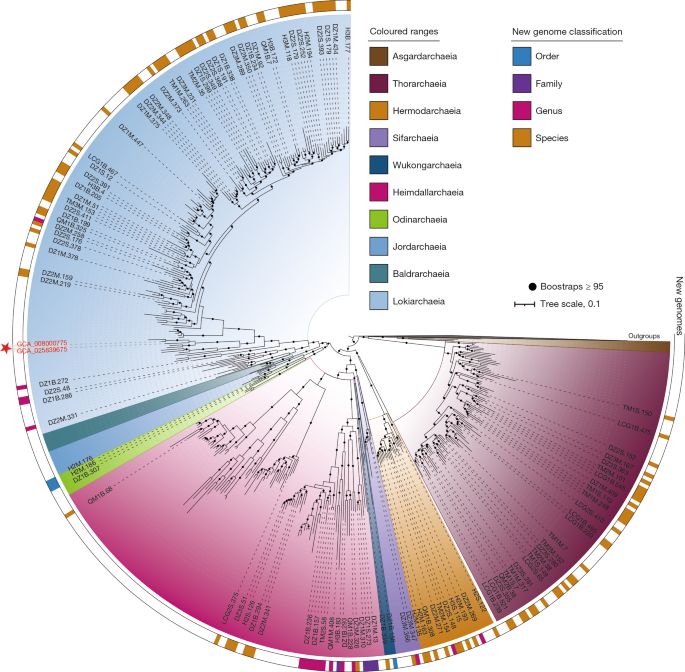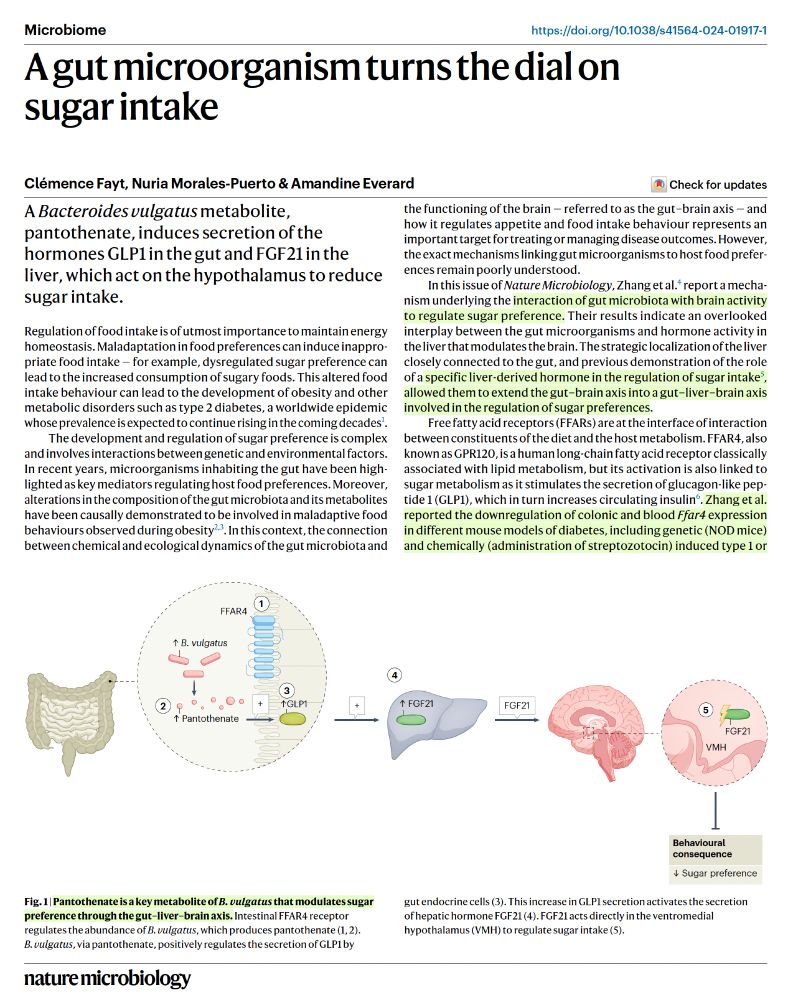
Christian M. Zmasek, PhD
@christianzmasek.bsky.social
(Computational) Molecular Biology, Comparative Genomics, Evolution
J. Craig Venter Institute
personal account
https://www.linkedin.com/in/cmzmasek/
J. Craig Venter Institute
personal account
https://www.linkedin.com/in/cmzmasek/
Reposted by Christian M. Zmasek, PhD
Dr. Alba Grifoni (@albagrifoni.bsky.social) and her team share new research that could help us fight many viruses at once—and stop emerging diseases in their tracks! bit.ly/45EYs6C
#virology #immunology #Tcells #health #medicine #STEM #SanDiego
#virology #immunology #Tcells #health #medicine #STEM #SanDiego

LJI scientists develop new approach to fighting many viruses at once
New vaccine design pipeline could protect against emerging SARS-CoV-2 variants and more
bit.ly
August 7, 2025 at 6:46 PM
Dr. Alba Grifoni (@albagrifoni.bsky.social) and her team share new research that could help us fight many viruses at once—and stop emerging diseases in their tracks! bit.ly/45EYs6C
#virology #immunology #Tcells #health #medicine #STEM #SanDiego
#virology #immunology #Tcells #health #medicine #STEM #SanDiego
Reposted by Christian M. Zmasek, PhD
#SigmaXiAwards @lji.org
Congratulations to our 2025 Procter Prize recipient, La Jolla Institute for Immunology's Alessandro Sette.
Read More: ow.ly/qFn350WHSR7
Awards: ow.ly/pTxi50WHSR6
IFoRE: ow.ly/jubN50WHSR8
Congratulations to our 2025 Procter Prize recipient, La Jolla Institute for Immunology's Alessandro Sette.
Read More: ow.ly/qFn350WHSR7
Awards: ow.ly/pTxi50WHSR6
IFoRE: ow.ly/jubN50WHSR8

August 18, 2025 at 9:51 PM
#SigmaXiAwards @lji.org
Congratulations to our 2025 Procter Prize recipient, La Jolla Institute for Immunology's Alessandro Sette.
Read More: ow.ly/qFn350WHSR7
Awards: ow.ly/pTxi50WHSR6
IFoRE: ow.ly/jubN50WHSR8
Congratulations to our 2025 Procter Prize recipient, La Jolla Institute for Immunology's Alessandro Sette.
Read More: ow.ly/qFn350WHSR7
Awards: ow.ly/pTxi50WHSR6
IFoRE: ow.ly/jubN50WHSR8
Highly conserved Betacoronavirus sequences are broadly recognized by human T cells
www.sciencedirect.com/science/arti...
www.sciencedirect.com/science/arti...

Highly conserved Betacoronavirus sequences are broadly recognized by human T cells
The COVID-19 pandemic highlighted the critical need for vaccine strategies capable of addressing emerging viral threats. Betacoronaviruses, including …
www.sciencedirect.com
August 6, 2025 at 6:27 PM
Highly conserved Betacoronavirus sequences are broadly recognized by human T cells
www.sciencedirect.com/science/arti...
www.sciencedirect.com/science/arti...
Reposted by Christian M. Zmasek, PhD
223 metagenomes reveal eukaryotes' deep origin outside Heimdallarchaeia within Asgardarchaeota, reshaping the evolutionary timeline dramatically! PMID:40335687, Nature 2025, @Nature https://doi.org/10.1038/s41586-025-08955-7 #Medsky #Pharmsky #RNA #ASHG #ESHG 🧪

Deep origin of eukaryotes outside Heimdallarchaeia within Asgardarchaeota | Nature
Research on the morphology, physiology and genomics of Asgard archaea has provided valuable insights into the evolutionary history of eukaryotes1–3. A previous study suggested that eukaryotes are nested within Heimdallarchaeia4, but their exact phylogenetic placement within Asgard archaea remains controversial4,5. This debate complicates understanding of the metabolic features and timescales of early eukaryotic ancestors. Here we generated 223 metagenome-assembled nearly complete genomes of Asgard archaea that have not previously been documented. We identify 16 new lineages at the genus level or higher, which substantially expands the known phylogenetic diversity of Asgard archaea. Through sophisticated phylogenomic analysis of this expanded genomic dataset involving several marker sets we infer that eukaryotes evolved before the diversification of all sampled Heimdallarchaeia, rather than branching with Hodarchaeales within the Heimdallarchaeia. This difference in the placement of euk
doi.org
June 14, 2025 at 1:10 AM
Reposted by Christian M. Zmasek, PhD
A huge day for mapping in life science!
—the mammalian brain, most extensive yet (10 papers @nature.com journals)
nature.com/articles/s41...
@alleninstitute.bsky.social
—a comprehensive map of the human cell->sub-cellular
nature.com/articles/s41...
—complete ape genomes
nature.com/articles/s41...
—the mammalian brain, most extensive yet (10 papers @nature.com journals)
nature.com/articles/s41...
@alleninstitute.bsky.social
—a comprehensive map of the human cell->sub-cellular
nature.com/articles/s41...
—complete ape genomes
nature.com/articles/s41...


April 9, 2025 at 9:34 PM
A huge day for mapping in life science!
—the mammalian brain, most extensive yet (10 papers @nature.com journals)
nature.com/articles/s41...
@alleninstitute.bsky.social
—a comprehensive map of the human cell->sub-cellular
nature.com/articles/s41...
—complete ape genomes
nature.com/articles/s41...
—the mammalian brain, most extensive yet (10 papers @nature.com journals)
nature.com/articles/s41...
@alleninstitute.bsky.social
—a comprehensive map of the human cell->sub-cellular
nature.com/articles/s41...
—complete ape genomes
nature.com/articles/s41...
Reposted by Christian M. Zmasek, PhD
When Nature does a photo roundup, it’s always worth a scroll. March’s edition is packed with mind-blowing REAL shots that capture the beauty, weirdness, and wonder of science 🧪—no AI needed.
Case in point: this gorgeous shot of two courting crab spiders. Just one of many stunners. 💘
Case in point: this gorgeous shot of two courting crab spiders. Just one of many stunners. 💘

Incredible close-up of colourful crab spiders — March’s best science images
The month’s sharpest science shots, selected by Nature’s photo team.
nature.com
April 3, 2025 at 12:26 PM
When Nature does a photo roundup, it’s always worth a scroll. March’s edition is packed with mind-blowing REAL shots that capture the beauty, weirdness, and wonder of science 🧪—no AI needed.
Case in point: this gorgeous shot of two courting crab spiders. Just one of many stunners. 💘
Case in point: this gorgeous shot of two courting crab spiders. Just one of many stunners. 💘
Reposted by Christian M. Zmasek, PhD
For grad students and postdocs: We'd love to see you at the Molecular and Cell Biology of Symbiosis course at the Marine Biological Labs this summer! Application deadline is Apr 14, so apply soon. Please share with anyone who might be interested!
www.mbl.edu/education/ad...
www.mbl.edu/education/ad...

Molecular and Cell Biology of Symbiosis | Marine Biological Laboratory
This is an immersive research-based course designed to teach basic concepts, open research questions, and facilitate state-of-the-art experimental approaches in symbiosis research.
www.mbl.edu
April 3, 2025 at 6:24 PM
For grad students and postdocs: We'd love to see you at the Molecular and Cell Biology of Symbiosis course at the Marine Biological Labs this summer! Application deadline is Apr 14, so apply soon. Please share with anyone who might be interested!
www.mbl.edu/education/ad...
www.mbl.edu/education/ad...
Reposted by Christian M. Zmasek, PhD
2/46 I highly recommend reading Kai’s “Behind the Paper” blog.
communities.springernature.com/posts/a-long...
It does a lovely job of telling a story of surprise discovery, inspiration, and the coordinated work of a dozen people as Kai raced against the graduation clock to get this project done
communities.springernature.com/posts/a-long...
It does a lovely job of telling a story of surprise discovery, inspiration, and the coordinated work of a dozen people as Kai raced against the graduation clock to get this project done

A long-term evolution experiment for whole-genome duplication
The Multicellularity Long Term Evolution Experiment (MuLTEE) unexpectedly becomes the longest-running polyploidy evolution experiment, shedding light on how whole-genome duplication can arise, persist...
communities.springernature.com
March 5, 2025 at 11:00 PM
2/46 I highly recommend reading Kai’s “Behind the Paper” blog.
communities.springernature.com/posts/a-long...
It does a lovely job of telling a story of surprise discovery, inspiration, and the coordinated work of a dozen people as Kai raced against the graduation clock to get this project done
communities.springernature.com/posts/a-long...
It does a lovely job of telling a story of surprise discovery, inspiration, and the coordinated work of a dozen people as Kai raced against the graduation clock to get this project done
Reposted by Christian M. Zmasek, PhD
Cenozoic evolutionary history obscures the Mesozoic origins of acanthopterygian fishes
@chasedbrownstein.bsky.social et al. 2025, Evolution
Alt text by senior author Tom Near explains the significance of this new tree
#Teamfish #ichthyology
@chasedbrownstein.bsky.social et al. 2025, Evolution
Alt text by senior author Tom Near explains the significance of this new tree
#Teamfish #ichthyology

March 5, 2025 at 3:16 PM
Cenozoic evolutionary history obscures the Mesozoic origins of acanthopterygian fishes
@chasedbrownstein.bsky.social et al. 2025, Evolution
Alt text by senior author Tom Near explains the significance of this new tree
#Teamfish #ichthyology
@chasedbrownstein.bsky.social et al. 2025, Evolution
Alt text by senior author Tom Near explains the significance of this new tree
#Teamfish #ichthyology
Reposted by Christian M. Zmasek, PhD
Researchers find that fruit flies play too [via Uni. of Leipzig] 🧪🐝🎠⚗️
"...genetic, neuronal and biochemical factors [] influence the fruit fly’s playful behaviour"
www.uni-leipzig.de/en/newsdetai...
#fruit #fly #drosophila #melanogaster #play #carousel #agency #playful #behavior #invertebrates
"...genetic, neuronal and biochemical factors [] influence the fruit fly’s playful behaviour"
www.uni-leipzig.de/en/newsdetai...
#fruit #fly #drosophila #melanogaster #play #carousel #agency #playful #behavior #invertebrates

Flies play too, researchers find
In a recent study, scientists at Leipzig University have for the first time demonstrated play-like behaviour in flies. They found that fruit flies (Drosophila melanogaster) voluntarily and repeatedly ...
www.uni-leipzig.de
February 15, 2025 at 12:28 AM
Researchers find that fruit flies play too [via Uni. of Leipzig] 🧪🐝🎠⚗️
"...genetic, neuronal and biochemical factors [] influence the fruit fly’s playful behaviour"
www.uni-leipzig.de/en/newsdetai...
#fruit #fly #drosophila #melanogaster #play #carousel #agency #playful #behavior #invertebrates
"...genetic, neuronal and biochemical factors [] influence the fruit fly’s playful behaviour"
www.uni-leipzig.de/en/newsdetai...
#fruit #fly #drosophila #melanogaster #play #carousel #agency #playful #behavior #invertebrates
Reposted by Christian M. Zmasek, PhD
Potential game changer test. Prognosis for pancreatic is usually terrible because it is often stage 4 when discovered. 🧪

Cheap blood test detects pancreatic cancer before it spreads
The deadly cancer is often not found until it has spread to other parts of the body.
www.nature.com
February 13, 2025 at 7:36 PM
Potential game changer test. Prognosis for pancreatic is usually terrible because it is often stage 4 when discovered. 🧪
Reposted by Christian M. Zmasek, PhD
A different kind of Pac-Man! An innovative, rapid nanosensor assay to help diagnose early pancreatic cancer in people at high-risk (PAC-MANN)
www.science.org/doi/10.1126/...
www.science.org/doi/10.1126/...

Early detection of pancreatic cancer by a high-throughput protease-activated nanosensor assay
A high-throughput, noninvasive, rapid protease-activated nanosensor identifies patients with pancreatic cancer in a small volume of blood.
www.science.org
February 12, 2025 at 7:58 PM
A different kind of Pac-Man! An innovative, rapid nanosensor assay to help diagnose early pancreatic cancer in people at high-risk (PAC-MANN)
www.science.org/doi/10.1126/...
www.science.org/doi/10.1126/...
Reposted by Christian M. Zmasek, PhD
Happy Darwin Day!
To celebrate, the National University of Singapore released a collection of historical depictions of Darwin and of his and Wallace's theory of evolution by natural selection.
I like this portrait by Henry Furniss (1854 - 1925).
See: www.wivb.com/business/pre...
🧪
To celebrate, the National University of Singapore released a collection of historical depictions of Darwin and of his and Wallace's theory of evolution by natural selection.
I like this portrait by Henry Furniss (1854 - 1925).
See: www.wivb.com/business/pre...
🧪

February 12, 2025 at 8:37 PM
Happy Darwin Day!
To celebrate, the National University of Singapore released a collection of historical depictions of Darwin and of his and Wallace's theory of evolution by natural selection.
I like this portrait by Henry Furniss (1854 - 1925).
See: www.wivb.com/business/pre...
🧪
To celebrate, the National University of Singapore released a collection of historical depictions of Darwin and of his and Wallace's theory of evolution by natural selection.
I like this portrait by Henry Furniss (1854 - 1925).
See: www.wivb.com/business/pre...
🧪
Reposted by Christian M. Zmasek, PhD
Learning the language of life with A.I.
@science.org
In today's essay, I review the phenomenal progress in foundation models of DNA, RNA, proteins, ligands, cells, their interactions, the Virtual Lab, and the aspiration for the Virtual Cell
www.science.org/doi/10.1126/...
@science.org
In today's essay, I review the phenomenal progress in foundation models of DNA, RNA, proteins, ligands, cells, their interactions, the Virtual Lab, and the aspiration for the Virtual Cell
www.science.org/doi/10.1126/...

Learning the language of life with AI
In 2021, a year before ChatGPT took the world by storm amid the excitement about generative artificial intelligence (AI), AlphaFold 2 cracked the 50-year-old protein-folding problem, predicting three-...
www.science.org
January 30, 2025 at 7:40 PM
Learning the language of life with A.I.
@science.org
In today's essay, I review the phenomenal progress in foundation models of DNA, RNA, proteins, ligands, cells, their interactions, the Virtual Lab, and the aspiration for the Virtual Cell
www.science.org/doi/10.1126/...
@science.org
In today's essay, I review the phenomenal progress in foundation models of DNA, RNA, proteins, ligands, cells, their interactions, the Virtual Lab, and the aspiration for the Virtual Cell
www.science.org/doi/10.1126/...
Reposted by Christian M. Zmasek, PhD
These animals evolved to be ‘ultrablack’ — here’s why 🐈⬛️◼️🧪
An ant that disappears into the forest floor, a bird that demands attention from mates — for these animals, an inky black exterior is an evolutionary advantage
www.nationalgeographic.com/animals/arti...
An ant that disappears into the forest floor, a bird that demands attention from mates — for these animals, an inky black exterior is an evolutionary advantage
www.nationalgeographic.com/animals/arti...

These animals evolved to be ‘ultrablack’—here’s why
An ant that disappears into the forest floor, a bird that demands attention from mates—for these animals, an inky black exterior is an evolutionary advantage.
www.nationalgeographic.com
January 29, 2025 at 5:03 AM
These animals evolved to be ‘ultrablack’ — here’s why 🐈⬛️◼️🧪
An ant that disappears into the forest floor, a bird that demands attention from mates — for these animals, an inky black exterior is an evolutionary advantage
www.nationalgeographic.com/animals/arti...
An ant that disappears into the forest floor, a bird that demands attention from mates — for these animals, an inky black exterior is an evolutionary advantage
www.nationalgeographic.com/animals/arti...
Reposted by Christian M. Zmasek, PhD
How our gut microbiome regulates sugar preference nature.com/articles/s41...

January 24, 2025 at 4:43 PM
How our gut microbiome regulates sugar preference nature.com/articles/s41...
Reposted by Christian M. Zmasek, PhD
What is reverse development, and how does it help the comb jelly survive adverse conditions? In the latest Science Sessions podcast, Joan Soto-Angel and Pawel Burkhardt describe a comb jelly that can reverse its development to an earlier stage of life. Listen now: www.pnas.org/post/podcast...

January 24, 2025 at 6:55 PM
What is reverse development, and how does it help the comb jelly survive adverse conditions? In the latest Science Sessions podcast, Joan Soto-Angel and Pawel Burkhardt describe a comb jelly that can reverse its development to an earlier stage of life. Listen now: www.pnas.org/post/podcast...
Reposted by Christian M. Zmasek, PhD
Running "Smashing Spider Myths" sessions for highschoolers in San Mateo today. My little spider ambassadors are ready to go! #Spiders #SciComm #Science #Education

January 7, 2025 at 7:27 PM
Running "Smashing Spider Myths" sessions for highschoolers in San Mateo today. My little spider ambassadors are ready to go! #Spiders #SciComm #Science #Education
Reposted by Christian M. Zmasek, PhD
This is a Podura aquatica and a female Sminthurides aquaticus who are, not surprisingly, chilling out at the edge of my pond. Their body ratios are so different and show off how unusual P.aquatica is. Amazing. #springtail #chaosofdelight #collembola #macro #macrophotography #pondlife #cute

December 14, 2024 at 7:28 PM
This is a Podura aquatica and a female Sminthurides aquaticus who are, not surprisingly, chilling out at the edge of my pond. Their body ratios are so different and show off how unusual P.aquatica is. Amazing. #springtail #chaosofdelight #collembola #macro #macrophotography #pondlife #cute
Reposted by Christian M. Zmasek, PhD
...and here's a Primer by Alejandro Couce, also in @plosbiology.bsky.social plos.io/4fby0D8
December 6, 2024 at 7:08 PM
...and here's a Primer by Alejandro Couce, also in @plosbiology.bsky.social plos.io/4fby0D8
Reposted by Christian M. Zmasek, PhD
We'd like to thank our generous sponsors for their support of the International SynBYSS Conference. Your commitment enables us to bring together a diverse and dynamic community of experts, innovators, and thought leaders in synthetic biology, creating an exceptional experience for all attendees.

December 5, 2024 at 11:00 PM
We'd like to thank our generous sponsors for their support of the International SynBYSS Conference. Your commitment enables us to bring together a diverse and dynamic community of experts, innovators, and thought leaders in synthetic biology, creating an exceptional experience for all attendees.
Reposted by Christian M. Zmasek, PhD
Oreodonts are extinct mammals that looked similar to pigs and sheep, but were more closely related to camels. They are the most commonly found fossil in the White River Badlands in South Dakota, and this exceptional specimen from our collection shows an oreodont curled up inside its burrow.

December 5, 2024 at 7:59 PM
Oreodonts are extinct mammals that looked similar to pigs and sheep, but were more closely related to camels. They are the most commonly found fossil in the White River Badlands in South Dakota, and this exceptional specimen from our collection shows an oreodont curled up inside its burrow.
Reposted by Christian M. Zmasek, PhD
two excellent papers on enhancer-promoter distance. Revisiting a classic unsolved problem. www.cell.com/molecular-ce... www.cell.com/molecular-ce... Wysocka and @chribue.bsky.social labs

Enhancer cooperativity can compensate for loss of activity over large genomic distances
Thomas, Feng, et al. introduce a synthetic platform that allows the building of complex
regulatory landscapes. Integrating the same enhancer at different distances from a
promoter uncovered that activ...
www.cell.com
December 2, 2024 at 7:30 PM
two excellent papers on enhancer-promoter distance. Revisiting a classic unsolved problem. www.cell.com/molecular-ce... www.cell.com/molecular-ce... Wysocka and @chribue.bsky.social labs
Reposted by Christian M. Zmasek, PhD
This is a pretty interesting paper. Anglerfishes colonized the deep sea and then radiated into every weirdo shape. Was it adaptive radiation (yet in a generalist environment), or something else? 🧪🦑
New paper alert 🚨check out our new study in Nature Ecology & Evolution on anglerfish trait evolution led by the fantastic @lizmillermacroevo.bsky.social! www.nature.com/articles/s41...

Reduced evolutionary constraint accompanies ongoing radiation in deep-sea anglerfishes - Nature Ecology & Evolution
Based on phylogenomic and geometric morphometric analyses of 132 anglerfish species, the authors infer a Cretaceous origin of the clade and show that bathypelagic anglerfish are undergoing rapid pheno...
www.nature.com
November 27, 2024 at 2:22 PM
This is a pretty interesting paper. Anglerfishes colonized the deep sea and then radiated into every weirdo shape. Was it adaptive radiation (yet in a generalist environment), or something else? 🧪🦑
Reposted by Christian M. Zmasek, PhD
Nicolas Svetec, David Begun, and I wrote a review article about de novo genes. If you are interested in this topic please take a look at this final open-access version at AnnualReviews
www.annualreviews.org/content/jour...
www.annualreviews.org/content/jour...

November 26, 2024 at 1:50 PM
Nicolas Svetec, David Begun, and I wrote a review article about de novo genes. If you are interested in this topic please take a look at this final open-access version at AnnualReviews
www.annualreviews.org/content/jour...
www.annualreviews.org/content/jour...

